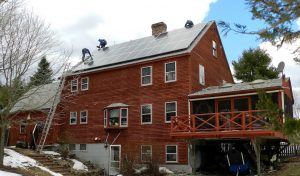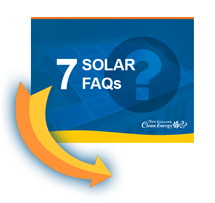One of the most important things to think about before installing rooftop solar panels is to evaluate the condition of said roof. If not, there’s a chance you will have to pay to remove and reinstall your solar panels, just to do a roof replacement. Not only is that extra money nobody wants to spend, but it could end up costing quite a good chunk of change.
According to the Office of Energy Efficiency and Renewable Energy, installation labor is on average 11% of the total cost of the solar system. That means if you spent $20,000 on your system, that’s $2,200 just spent on labor (and that is a national average, so depending on where you live that may be rather low). So you don’t want to disregard evaluating your roof before installation.
An evaluation of your roof prior to installation of your rooftop solar panels may seem like a simple fix, but there are a few conditions that may determine the quality and number of serviceable years of your roof.
Typically, roofs are made of either metal, tile, or asphalt shingles. Tile roofs are common on the west coast, but very much less so here in the Northeast. As a result, we don’t see them very often, and in truth, we don’t install on tile roofs. You might say it is a specialty that we just don’t get to practice. That said, it might be possible to do if you install the roof after the footings for your solar is installed. But that doesn’t help if you already have a tile roof over your head.

The most common type of material used for roofs in the United States is definitely asphalt shingles. However, there are multiple types all ranging in price and quality, 3-tab shingles being the most affordable. And because they’re cheaper, they are thinner than other types and therefore don’t last nearly as long. The other type of asphalt shingle is an “architectural shingle.” They are thicker and have many overlapping layers. These thicker products make them stronger against poor weather conditions, so it’s important to identify the type of shingles you have during your roof’s evaluation.
Lastly, we have metal roofs. First and foremost, metal is significantly more durable than asphalt. It can last 40 years or more and usually the first thing to break down is the paint on top rather than the actual metal. Metal roofs can be a standing seam, corrugated metal, or made up of individual shingles. All have pros and cons. While corrugated is generally the most affordable, it has more penetrations through it to affix to the roof sheathing. Metal shingles are nice in that they can look a lot like asphalt shingles, but the solar pedestals must go in before your metal roof.
So if you have metal shingles already, solar would be extremely hard to add. This leaves the standing metal roof, which from solar’s perspective is probably the most “friendly” because it is easy to add solar to it at any time and you’ll have minimal roof penetrations. The only real downside is we typically don’t install systems on them in the wintertime.
Now you might be wondering: how good-of-shape do you need your roof to be before installing rooftop solar panels? As a general rule of thumb, most solar companies recommend at least 15 years of life remaining. But it does get tricky if your roof is in the middle range between 10 to 15 years. You definitely don’t want to replace your roof if it still has useful life left. So, what do you do?
We recommend you do everything you can to understand how much money you’ll save by going solar. You can do this by finding out your payback period, which is the number of years it will take for a solar panel system to pay back your initial investment through your energy savings. Some customers have seen this happen in as little as five years!
There are also a few warning signs to look out for that you may be able to identify without a professional. Missing shingles is usually an easy problem to spot. Because of severe wind, roofing materials can be lifted away leaving a gap. These shingles could also curl, crack, and degrade from UV exposure. If you notice lots of granules from your shingles getting caught in your gutters or washing off the roof, this is definitely a sign your roof is nearing the end of its life. Lastly, if you notice damp spots in your attic (on the underside of the roof sheathing) that could mean rot, which is a huge issue. If you see any of these problem spots, it’s probably time for a replacement.
As a reminder, NE Clean Energy has been installing rooftop solar panels since 2006. Being solar experts, we have worked on plenty of different roof styles that can be seen in our showroom. So no matter what material your roof is made of, we will make a customized proposal for you that will include an assessment of your roof. And if your roof doesn’t have much life left in it, we’ll tell you upfront and will recommend the replacement of your roof. Once we’re installing, we’ll treat your roof respectfully and seriously. At the end of the day, we want to be your final destination point to make an assessment of your roof and create your custom-designed solar system.
If you like this article you might be interested in this one as well:


 Download our 7 FAQs
Download our 7 FAQs


